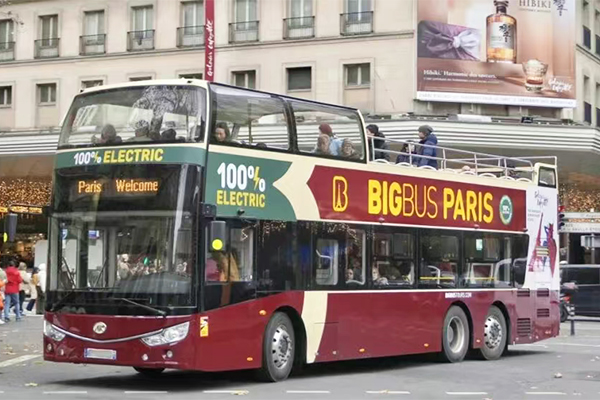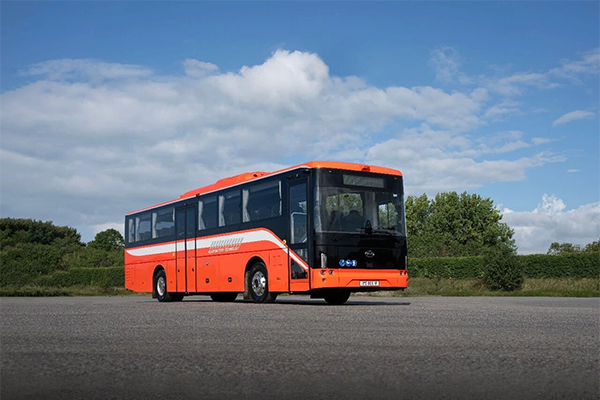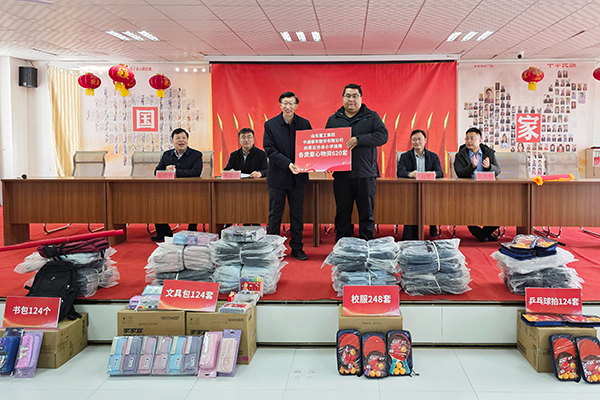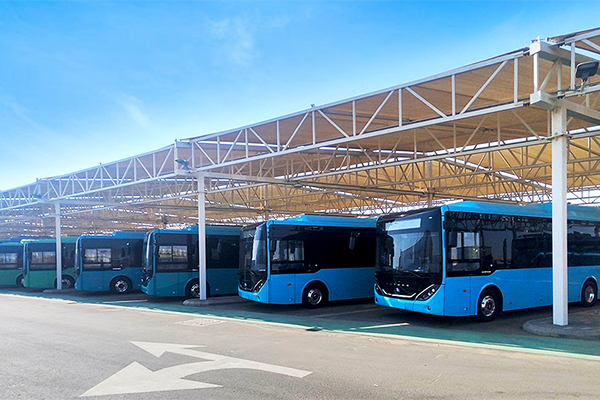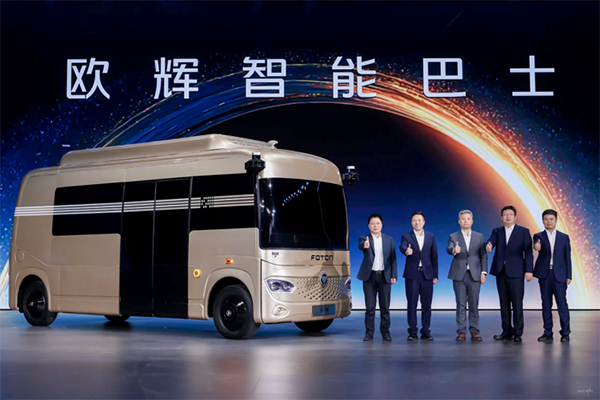Navistar Seeks $73B China School Bus Market
25 July 2012
www.chinabuses.org: John McKinney sat outside a Beijing Starbucks, sipped his coffee and scanned the traffic. He was looking for school buses, or what passes for them in the world’s most-populous nation.A dozen school-bound vehicles rolled by on their morning runs. Some were minivans, while others were shuttle buses or former coaches painted yellow. None was the tried-and-true design used in the U.S. since the 1930s. McKinney, head of Navistar International Corp. (NAV) (NAV)’s bus business, picked up his iPhone and snapped away. His bosses took note.
“You look at the China market and they have school buses and they’re cheap,” Dan Ustian, Navistar’s chief executive officer, said in an interview. “Too cheap. They have scrimped on quality and safety standards, so this is our opportunity.”
China may spend $72.7 billion (463 billion yuan) to upgrade school buses and increase their number over the next decade, said Navistar and Blue Bird Corp., another manufacturer. Navistar, which has about half the U.S. market, sees China buying 50,000 a year by 2015, With partner Anhui Jianghuai Automobile Co., Ustian said he wants to get most of that.
Late last year, a series of deadly accidents highlighted the danger. Overcrowded minivans, SUVs and city buses, conscripted into school service, rolled down embankments or were hit by trucks at intersections. At least 40 died.
New Standards
The outcry forced China to create standards for how school buses are built, modeled after U.S. standards and developed with help from Navistar. The company signed a joint venture letter of intent in April. Navistar isn’t alone. Blue Bird, based in Fort Valley, Georgia, and owned by Cerberus Capital Management LP, is also looking to gain business in China.
Navistar, based in Lisle, Illinois, is struggling in its home market, where it has failed to produce a 13-liter heavy engine for its trucks that meets 2010 U.S. emission standards. The company said July 6 it’s adding “urea-based after- treatment” to the engines, at additional cost, to comply with the rules. Those engines aren’t used in school buses.
Last month, the company lowered its full-year profit forecast to a range of break-even to $2 a share, excluding some costs. Navistar in February forecast 2012 profit of as much as $5.75 a share, lowering it to a maximum of $5.25 a share in March. Navistar shares are down 42 percent this year through yesterday after a 35 percent slide in 2011.
Billionaire investor Carl Icahn last month reported that he boosted his stake in Navistar to 11.9 percent. Hedge-fund manager Mark Rachesky took a 13.6 percent (NAV)stake, increased it to 14.95 percent and is the company’s second-largest shareholder. He said in a June 25 filing he planned to talk to management about the “business, operations, strategy and future plans.”
Franklin Resources Inc. (BEN) (BEN) reported in a filing yesterday it expanded its stake to 18.8 percent, to make it the largest Navistar shareholder.
Bus Fatalities
The impetus for revamping Chinese school buses occurred in late 2011. Last November, 19 children were killed and 43 were injured when 64 people riding in a nine-seat van doing duty as a school bus hit a coal truck in Gansu province.
In December, a school bus driver swerved to avoid two electric bikes in Xuzhou, in Jiangsu province. The bus overturned into a river, killing 12 students and injuring 11, China Daily said at the time. The death toll later rose to 15. At least seven students died after an overloaded minivan fell into a valley in Yunnan province in southwest China in late December.
The first set of new standards to make school buses safer were released for review in April and took effect May 1.
Safety Emphasis
New buses will be required to have a “sealed” safety cage with the engine extending in front of the windshield, floors elevated above the crash zone and strict capacity requirements to ensure vehicles aren’t overloaded, Phil Horlock, CEO of Cerberus’s Blue Bird, said in an interview. Bus makers have 13 months to comply with the new standard, he said.
Buses also will be given priority in traffic and drivers will need to be licensed, according to China Daily, the state- owned newspaper.
Ustian and McKinney said they worked with government officials to develop the safety standards.
Blue Bird is in talks with a Chinese firm about a joint venture to make its buses in China, said Horlock, a former Ford Motor Co. (F) (F) executive.
China is strengthening its regulations faster than the companies there can develop their own, said Sanjeev Varma, a Michigan-based automotive adviser at Duff & Phelps LLC.
‘Western Standards’
“The Chinese want to get to Western standards sooner rather than later,” Varma said. “They’re trying to access technology at a much faster rate, either by hiring Western consultants and advisers or by forming joint ventures.”
China has about 285,000 school buses, 10 percent of which meet the new standards, according to China’s state-run Xinhua News Agency. Navistar and Blue Bird see the fleet multiplying in the coming decade as China buys 1.5 million to 2 million school buses.
McKinney shared the pictures he took in February outside the Starbucks with co-workers back at Navistar headquarters to show the differences with Chinese buses compared with the U.S.
“They’ve adopted what they see superficially — their buses are yellow, it has a stop sign, it’s got lights that flash, those kinds of things,” he said. “But from a structural integrity standpoint, it’s much more than the color, although that’s a part. It’s much more than the flashing light.”
44 Standards
The diversity of school buses in China is reminiscent of those on U.S. roads in 1939, when the first set of national safety standards for school buses were developed at a conference at Teachers College at New York’s Columbia University.
From that seven-day meeting came 44 standards that determined school-bus length, ceiling height, aisle width and paint color, a now-iconic blend of orange and yellow known as school bus yellow. The standards have evolved and expanded since.
In the U.S., where about 475,000 school buses ferry 23.5 million kids to and from school each day, it’s the safest form of vehicular transportation, according to the National Highway Traffic Safety Administration. Each year, about seven kids are killed in school bus crashes, or 0.2 deaths for every 100 million vehicle miles, compared with 1.5 deaths for cars, according to NHTSA.
‘Pretty Aggressive’
U.S. manufacturers sold about 30,000 units in North America last year. Buses in the U.S. sell for about $80,000 and in China may fetch $50,000 to $60,000, Horlock said.
“Based on the reception we’ve had, there’s strong interest in getting an American school bus out there in the market,” he said. “They’ve set some pretty aggressive standards and compliance is going to require quite a bit of engineering work.”
Navistar and Anhui Jianghuai expect to start limited school bus production later this year, McKinney said.
To make their case in China, McKinney and other Navistar executives have been showing Chinese officials footage taken from a Florida traffic-monitoring camera of a tractor-trailer hitting one of its school buses filled with kids at 40 miles (64 kilometers) per hour. The front of the truck was crushed. The only damage to the bus was on the fascia. The kids walked away unharmed.
“It shows this is more than just paint color,” he said. “It takes the conversation to a whole other realm.”
Source : businessweek.com
Views:3850



